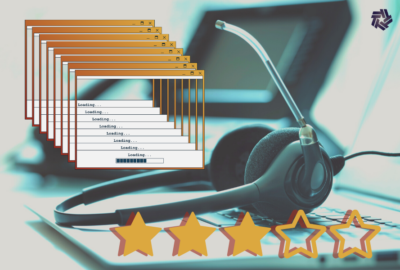Budget pressures force EEOC to shift gears
The Equal Employment Opportunity Commission needed to find savings after its IT budget received a 15 percent reduction in 2012. Kim Hancher, the EEOC CIO, decid...
wfedstaff | April 17, 2015 4:26 pm
The Equal Employment Opportunity Commission faced an IT budget reduction of about 15 percent in fiscal 2012 so it did what many people do in their personal lives.
Kim Hancher, the EEOC chief information officer, asked the agency’s wireless carrier for a discount or threatened to leave for a better deal somewhere else as part of her broad cost cutting effort.
“What we did was put together a bring-your-own-device team to lead the effort and one part of the team pressed the wireless carrier to help us in cutting costs or else risk losing the agency’s Blackberry business,” she said. “That carrier was a bit reluctant, but we pursued the rate plan reduction because I knew it could be done. That is what I did in my own life when my kids moved from pre-teen to teenagers and we needed fewer talking minutes, and unlimited texting. It’s not terribly different.”
She also analyzed the use of cell phones and data plans, and figured out what employees really needed.
These efforts led to the creation of a BYOD strategy, which asked employees to voluntarily give up their government-furnished device and use their own smartphone, and a more costs-effective approach to managing EEOC’s mobile devices.
“We were able to reduce our number of Blackberry devices from 560 to 360 and we eliminated a lot of zero use devices,” Hancher said.
EEOC had been paying about $800,000 a year for mobile device and plans, and now Hancher said the agency pays about $460,000 annually.
Starting with a pilot
To get to where Hancher could offer EEOC the ability to use personal smartphones, the agency had to tackle the usual security and legal issues.
Hancher said after doing the analysis of both the number and use of mobile devices, the working group decided the security requirements for using personal smartphones.
EEOC tested mobile management device (MDM) software with about 40 people in a pilot that lasted several months last spring.
“The security settings on the MDM forced the user to use a complex password on the device, limited the number of attempts to plug in your password and other security features,” she said.
Hancher said EEOC also had to write policy and rules of behavior for using personal devices on the agency’s network.
In the end, about 23 percent of all users decided to sign up for BYOD.
The most challenging part of all of this was getting in front of the rumor mill.
Hancher said the pushback didn’t come from people who had to give up their devices because they weren’t using them, but from those employees who used their devices all the time.
“There were a lot of rumors and stress that I was going to eliminate the Blackberry program,” she said. “So one of things I had to do was come out and clarify what we were doing so people weren’t unduly stressed.”
BYOD adoption slow at first
Hancher said EEOC recently completed a survey of employees who decided not to opt-in to the BYOD model.
She said the results skewed toward older employees liked having a government-furnished device and being able to separate work life from home life.
A second factor of most concern from those who didn’t opt-in to BYOD was the cost factor and whether using their smartphone for work would increase what they pay for service without any reimbursement from the government.
“What we don’t know yet is whether or not a normal email user would incur any additional costs, but there is that unknown that people fear,” she said. “The other factor that people cited, which I found interesting, was they don’t have a personal smartphone or tablet which would allow them to do BYOD. I think that reflects the generational issue and the EEOC having a mature workforce.”
Employees want to be reimbursed for using own devices
Hancher would like to explore the possibility of reimbursing employees. The survey found 78 percent of the respondents said they would be more willing to participate in BYOD if the government offered some kind of stipend.
“A lot of other people said if the privacy implications were clarified with BYOD, they would be more willing to give up their Blackberry,” she said. “The other thing people said was they would like to mask their phone number from appearing. They believed their personal cell phone number shouldn’t be divulged to business associates, to customers and the public with whom they work.”
And then there were those who never want to give up their government-furnished devices. Hancher said out of 180 respondents, about half of EEOC’s Blackberry users, many said nothing would convince them to move to use their own devices.
Hancher said she believes the reimbursement issue can be solved through an approach similar to the transit benefit program where employees receive a monthly stipend to help with the commuting costs, or to the way employees get paid for using their own cars to drive to a conference or training class.
“I’ve been working a lot across agencies because I want to share the lessons we learned. I want to establish a set of best practices, not just based on my own experiences, but on a wider use of BYOD,” she said.
MORE FROM SPECIAL REPORT, GOV 3.0: IT’S MOBILE
Mobile-minded CIOs point to importance of business case
Mobile computing fuels Arlington Cemetery modernization
VA’s mobile projects put iPads in hands of doctors – and patients
Column: Confessions of a BlackBerry lover
Column: With foundation for federal mobility in place, time to take on next set of challenges
Industry Chatter: Optimos CEO Lisa Mascolo on the mobile future
As move to mobile grows, federal workforce adapts to new normal
MHS takes cautious, yet innovative, approach to mobile health initiatives
The New Fed: Superhero or 24/7 puppet?
Copyright © 2024 Federal News Network. All rights reserved. This website is not intended for users located within the European Economic Area.
Jason Miller is executive editor of Federal News Network and directs news coverage on the people, policy and programs of the federal government.
Follow @jmillerWFED







